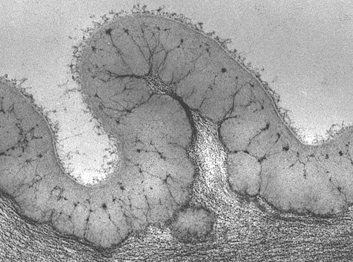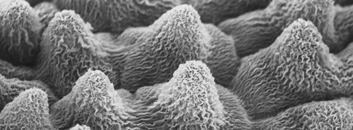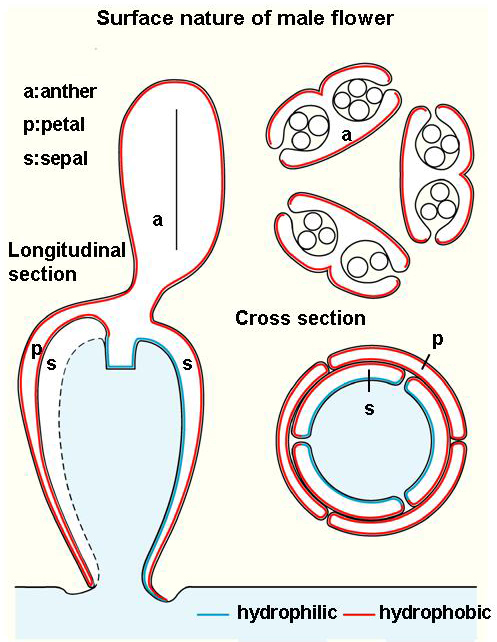The mechanisms of how male flowers stand on the sea remain unknown. The
shape and surface nature of a male flower must be mutually related with
the surface tension of seawater and gravity.
Petal surface of male flowers (SEM・TEM)
Projections are evident on the outer (inner at the stage of floral bud)
surface of petals. This surface is layered with cuticle and is hydrophobic.
Sepal surface of male flowers (TEM)
Cuticle layer is present at the inner (outer at the stage of floral bud)
surface. This layer is covered by a membrane with hydrophilic nature.
Pollen and its surface (SEM)
Pollen is relatively large, 120 micron meters in diameter. Pollen sinks
in sea water and germinates ca. 30 minutes after the contact with a pistil.
Anther and its surface (SEM)
Anthers are dehiscent at recurvature. The surface is covered by minor projections,
which are, in turn, covered by many undulated ridges.
Male flower during recurvature
Recurvature takes place in a moment, but may need several seconds. It occurs
usually on seasurface, but may occur inside a bubble in the sea.
Recurved male flower and pollen
Concave surface of sepals and petals completely turns to convex surface.
The tips of sepals, however, keep the original shape.
Male flowers before recurvature
Each flower is supported by a slender stalk, which is cut when the flower
floats..
Male flowers at recurvature
Each flower consists of sepals, petals and anther, each three in number.
The petals and sepals show recurvature.
Male flowers
Up to ca. 500 male flowers develop in a pair of bracts.Male flowers float
with a bubble. Photograph: Y. Azuma
Female flower
Usually a flower develops in a pair of bracts. Petals, three in number,
are much bigger than those of a male flower.
Male flowers drifting on sea surface
Tremendous numbers of male flowers are cut off in the bottom of the sea. They float to the sea surface and drift standing on it (they are ca. 3mm in height). Male flowers caught by petals of female flowers apparently sink in the sea when the tide arises (note the flower at bottom center).
Male flowers drift on sea surface to female flowers
Enhalus acoroides (L.f.) Royle: flower structure, pollination
|
It is quite unique that male flowers instead of pollen reach to female
flowers or pistils. Similar pollination mechanisms are known in Vallisneria which grows in freshwater.



